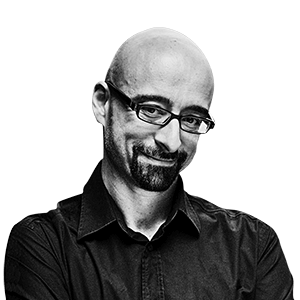Your body ages much faster at these two times of life.
A study shows that aging patterns are not exactly linear and affect several organs depending on the stage of life in which one is


Let's imagine the case of a middle-aged person who, one day, while searching through their phone, comes across a selfie they took a year earlier. Horrified, they realize that this image doesn't correspond to the one they see every day in the mirror: they can now count more wrinkles and much more gray hair. How can it be, if a relatively short time has passed, that they seem to have aged so quickly? The explanation should be that their body has experienced a more acute decline than usual. Indeed, that's what an article published in the magazine Nature Aging He claimed that it happens to all of us at least twice in our lives.
We tend to view aging as a homogeneous process, a one-way, inexorable path that begins slowly from the moment we leave youth behind. But the biology of this phenomenon is terribly complex, as we are gradually discovering, and lately we are accepting that things don't work exactly that way. On the one hand, we know that some interventions can somewhat slow aging in laboratory animals, demonstrating that the speed of degeneration is modifiable.
Furthermore, it seems that not all of our organs suffer from it at the same rate. Someone can reach advanced age with a liver that resembles that of a teenager, but kidneys that can no longer handle it, for example; or a perfectly functioning brain with lungs that can't breathe. External factors, such as the toxins we're exposed to or our diet, among others, have a lot to do with it, but also each person's genetics, which significantly influences the rate of tissue decay. Related to this, everyone has come to realize that some people age more quickly and others maintain a youthful appearance for decades.
To see if, despite these observations, common aging patterns can be defined, the group led by Dr. Michael P. Snyder of Stanford University in California used the latest technology available to analyze the aging of 108 Californians between the ages of 25 and 75. It was a lengthy study, as the scientists analyzed materials collected repeatedly over a period of up to seven years. Specifically, they used blood, feces, skin samples, and swabs taken from the volunteers' mouths and noses, as is done in COVID-19 tests. This gave them 135,000 different molecules to identify, from RNA to proteins to metabolic products, as well as some of the microbes that live in the body, the so-called microbiota.
We have two peaks
The result was that they discovered that aging patterns were not exactly linear, but rather, in general, there were two periods in which all the measured markers accelerated: around ages 44 and 60. During the first peak, specifically, the cardiovascular system and lipid metabolism worsened, while in the second, the immune system and carbohydrate metabolism were most affected. This, logically, increased the risk of suffering from diseases associated with these parameters.
The peak at age forty was, in principle, expected because it coincides with the onset of the transformation that brings about menopause, a period in women's lives that was already known to involve accelerated aging over a relatively short period of time. But what was surprising was that these changes were also seen in men around the same time. The conclusion is that it's not just variations in female hormone levels that are responsible for these changes, but that there is something more fundamental that has not yet been identified that affects both sexes.
Previous studies had found another peak around age 78 (beyond the maximum age of those participating in the current article), which would indicate that there are at least three waves of aging, not two. The key to supercentenarians is that, once a threshold, not yet well defined, is crossed, health remains fairly stable until the decline that precedes death.
One problem with this study is that we don't know exactly what the tools used to quantify biological aging measure, as we've mentioned before in these pages. Just as we can easily determine how the kidneys or liver function by detecting proteins in the blood, we can't know for sure the true age of these organs because we haven't yet found the appropriate markers. To avoid this problem, scientists have used as many different methods as possible, which reinforces the validity of the discovery. However, we still need to learn more about the biology of aging in order to fully understand its rhythms.
